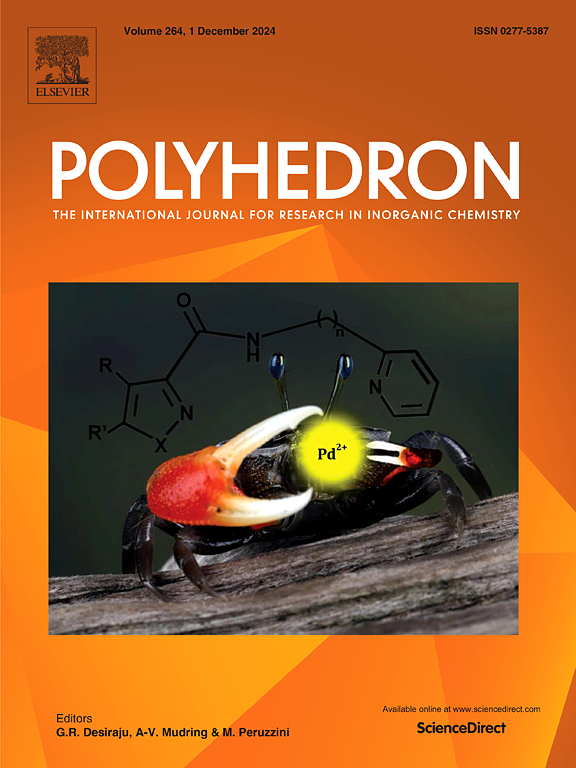Bottom-up synthesis of palladium nanoparticles: Kinetics effect and catalytic activity
IF 2.4
3区 化学
Q2 CHEMISTRY, INORGANIC & NUCLEAR
引用次数: 0
Abstract
Green nanotechnology is the term used to describe the ecologically responsible process of manufacturing PdNPs. It is an economical, safe, extensively utilized technology that is also good for the environment. In this work, Pd ions used for the bio-reduced to PdNPs using leaf extract from the Rosa damascena plant. The transmission electron microscopy of the PdNPs was analyzed at approx. 50 nm. This study examines the consequences of three key specifications on the environmental production of PdNPs. Temperature, pH, and volume of leaf extract are significant process factors. A leaf extract volume of 5 ml, pH of 4, and a temperature of 60 °C were more suitable for the maximum production of PdNPs. The volume of leaf extract, pH, and temperature were analyzed at 300 nm, 320 nm, and 350 nm using a UV–Vis spectrum to characterize PdNPs at the SPR band. Within the context of C–C cross-coupling processes, such as Mizoroki-Heck and Suzuki-Miyaura reactions the catalytic activity of PdNPs was examined at mild reaction conditions. For the purpose of characterizing the isolated product, 1H NMR was used. The PdNPs demonstrated a high level of catalytic activity and were able to provide conversion of the products that were being converted.

求助全文
约1分钟内获得全文
求助全文
来源期刊

Polyhedron
化学-晶体学
CiteScore
4.90
自引率
7.70%
发文量
515
审稿时长
2 months
期刊介绍:
Polyhedron publishes original, fundamental, experimental and theoretical work of the highest quality in all the major areas of inorganic chemistry. This includes synthetic chemistry, coordination chemistry, organometallic chemistry, bioinorganic chemistry, and solid-state and materials chemistry.
Papers should be significant pieces of work, and all new compounds must be appropriately characterized. The inclusion of single-crystal X-ray structural data is strongly encouraged, but papers reporting only the X-ray structure determination of a single compound will usually not be considered. Papers on solid-state or materials chemistry will be expected to have a significant molecular chemistry component (such as the synthesis and characterization of the molecular precursors and/or a systematic study of the use of different precursors or reaction conditions) or demonstrate a cutting-edge application (for example inorganic materials for energy applications). Papers dealing only with stability constants are not considered.
 求助内容:
求助内容: 应助结果提醒方式:
应助结果提醒方式:


